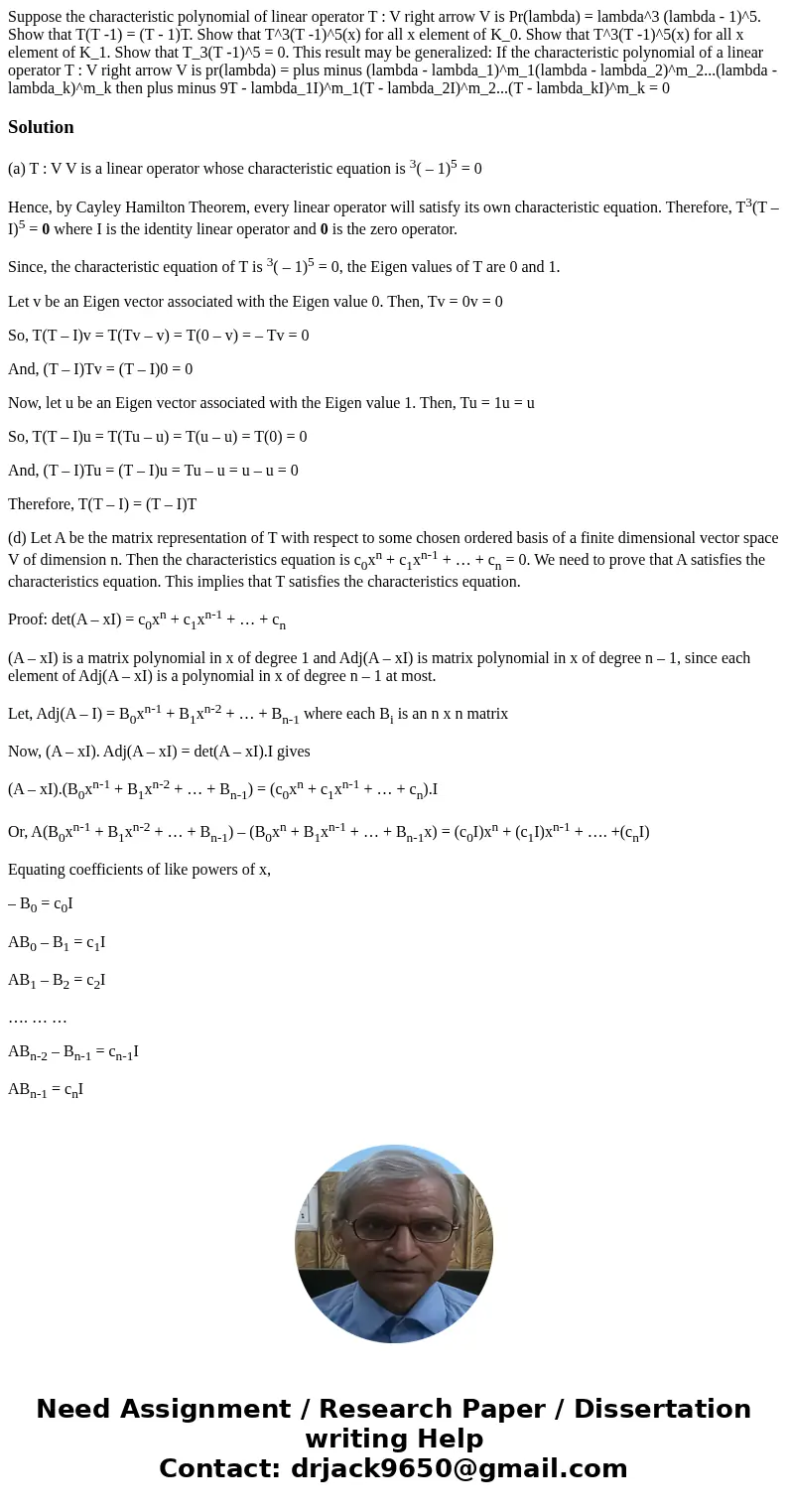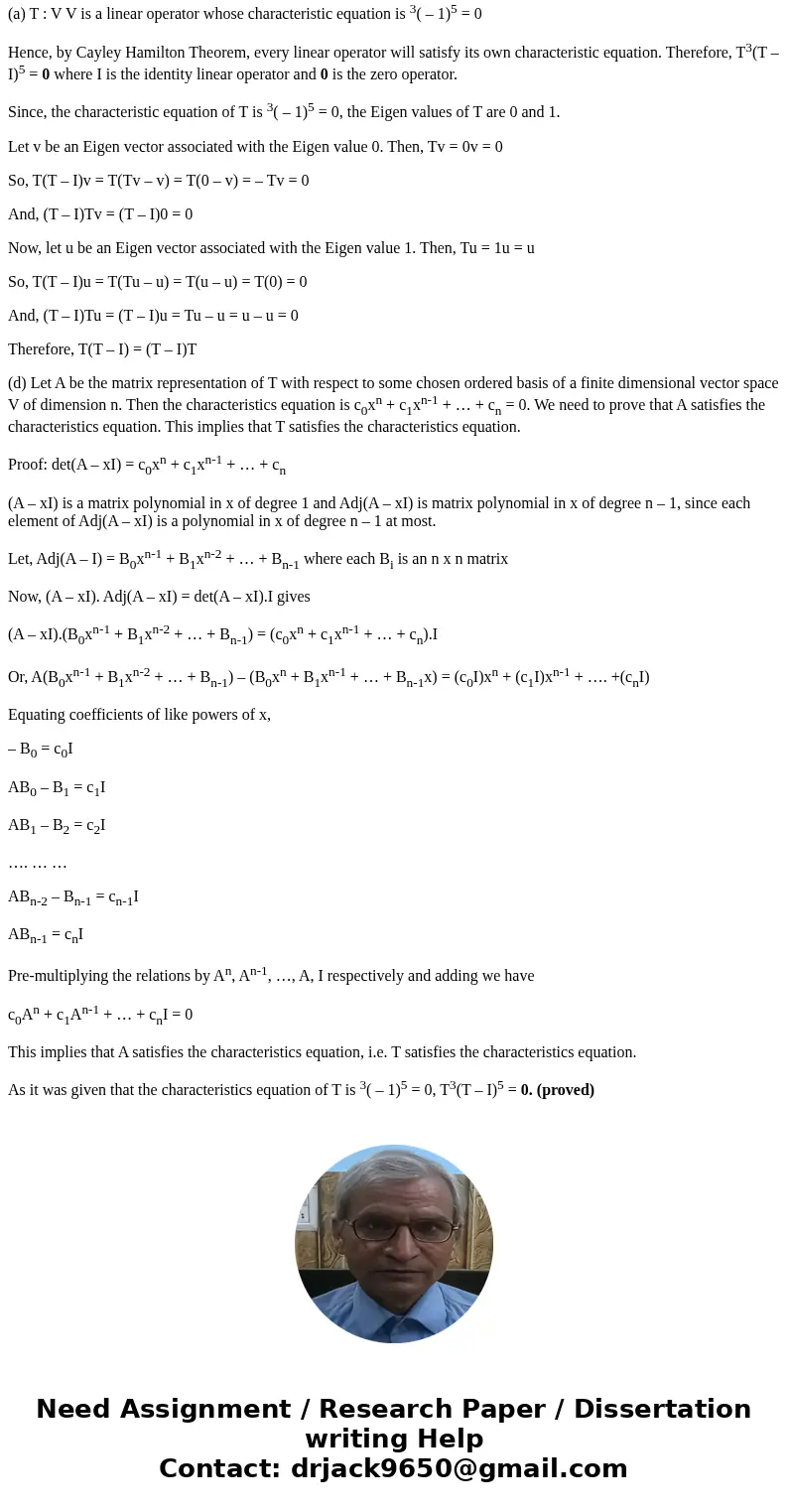Suppose the characteristic polynomial of linear operator T
Solution
(a) T : V V is a linear operator whose characteristic equation is 3( – 1)5 = 0
Hence, by Cayley Hamilton Theorem, every linear operator will satisfy its own characteristic equation. Therefore, T3(T – I)5 = 0 where I is the identity linear operator and 0 is the zero operator.
Since, the characteristic equation of T is 3( – 1)5 = 0, the Eigen values of T are 0 and 1.
Let v be an Eigen vector associated with the Eigen value 0. Then, Tv = 0v = 0
So, T(T – I)v = T(Tv – v) = T(0 – v) = – Tv = 0
And, (T – I)Tv = (T – I)0 = 0
Now, let u be an Eigen vector associated with the Eigen value 1. Then, Tu = 1u = u
So, T(T – I)u = T(Tu – u) = T(u – u) = T(0) = 0
And, (T – I)Tu = (T – I)u = Tu – u = u – u = 0
Therefore, T(T – I) = (T – I)T
(d) Let A be the matrix representation of T with respect to some chosen ordered basis of a finite dimensional vector space V of dimension n. Then the characteristics equation is c0xn + c1xn-1 + … + cn = 0. We need to prove that A satisfies the characteristics equation. This implies that T satisfies the characteristics equation.
Proof: det(A – xI) = c0xn + c1xn-1 + … + cn
(A – xI) is a matrix polynomial in x of degree 1 and Adj(A – xI) is matrix polynomial in x of degree n – 1, since each element of Adj(A – xI) is a polynomial in x of degree n – 1 at most.
Let, Adj(A – I) = B0xn-1 + B1xn-2 + … + Bn-1 where each Bi is an n x n matrix
Now, (A – xI). Adj(A – xI) = det(A – xI).I gives
(A – xI).(B0xn-1 + B1xn-2 + … + Bn-1) = (c0xn + c1xn-1 + … + cn).I
Or, A(B0xn-1 + B1xn-2 + … + Bn-1) – (B0xn + B1xn-1 + … + Bn-1x) = (c0I)xn + (c1I)xn-1 + …. +(cnI)
Equating coefficients of like powers of x,
– B0 = c0I
AB0 – B1 = c1I
AB1 – B2 = c2I
…. … …
ABn-2 – Bn-1 = cn-1I
ABn-1 = cnI
Pre-multiplying the relations by An, An-1, …, A, I respectively and adding we have
c0An + c1An-1 + … + cnI = 0
This implies that A satisfies the characteristics equation, i.e. T satisfies the characteristics equation.
As it was given that the characteristics equation of T is 3( – 1)5 = 0, T3(T – I)5 = 0. (proved)


 Homework Sourse
Homework Sourse